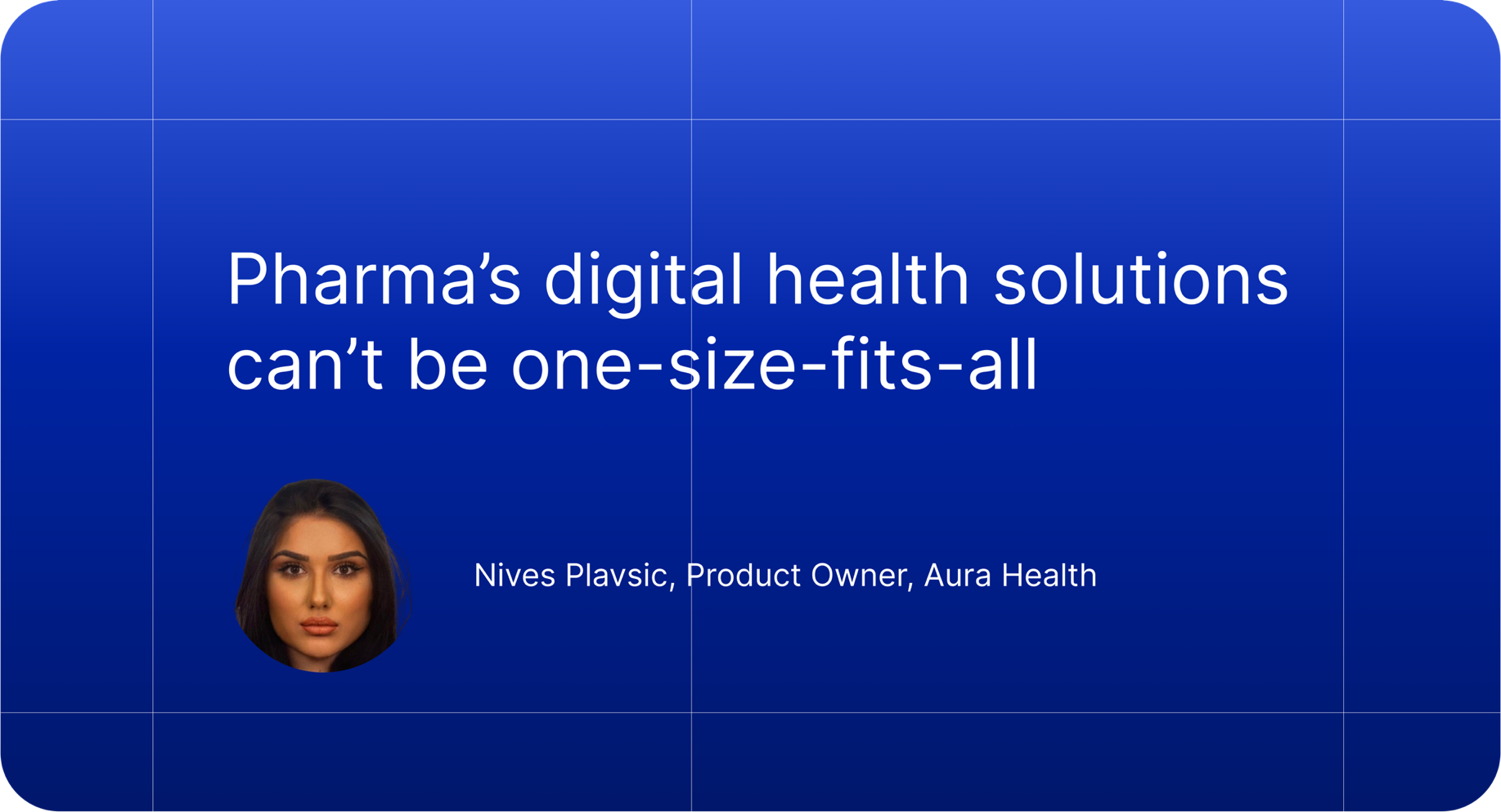In the evolving ecosystem of life sciences and healthcare delivery, digital health has emerged not only as a technological adjunct but as a core strategic pillar in drug commercialization and lifecycle management. For pharmaceutical manufacturers, the integration of digital health solutions is no longer a novelty or a differentiator.
It is a requirement for delivering value-based care, enhancing medication adherence, improving patient outcomes, and satisfying the growing expectations of payers, providers, and patients alike.
Despite the urgency to deploy digital tools, many life sciences organizations still grapple with a critical decision point: whether to adopt an off-the-shelf, configurable solution or to invest in a bespoke, customizable digital platform aligned with their brand, market strategy, and therapeutic objectives.
This decision has cascading implications across regulatory compliance, health economics, real-world evidence generation, HCP engagement, and ultimately, patient outcomes.
Strategic imperatives in digital health solutions design
A well-constructed digital health intervention must deliver on three primary imperatives: therapeutic impact, strategic fit, and scalability. Solutions that deliver measurable clinical and behavioral impact through high user engagement and sustained adherence are foundational. Strategic fit ensures alignment with the brand’s core value propositions, market access strategy, and disease area dynamics.
Scalability ensures that the solution can evolve across geographies, indications, and lifecycle phases while maintaining compliance and operational efficiency.
The days of deploying siloed patient apps or static adherence portals are long gone. Today’s digital health solutions landscape demands modular, interoperable, evidence-generating platforms that reflect the clinical, regulatory, and commercial nuances of the therapeutic areas they support.
Why off-the-shelf solutions fall short
Off-the-shelf or lightly configured digital health products offer perceived advantages in terms of time-to-market and upfront costs. However, they often fall short in long-term value delivery for multiple reasons. First, these solutions are rarely adaptable to the unique workflows, user segments, and clinical profiles required for precision engagement. Second, they often lack the governance framework and regulatory documentation (e.g., clinical evaluation reports, software validation, cybersecurity compliance) necessary for use in regulated environments.
What’s more, such solutions limit a sponsor’s ability to control branding, messaging, and user experience design—elements that are essential for differentiating a therapy in competitive or commoditized therapeutic classes. When competitors utilize the same platform or vendor, the potential for meaningful differentiation erodes.
The case for customized platforms
In contrast, customizable digital health solutions allow manufacturers to embed therapeutic context, behavior change methodologies, and real-time patient insights into their engagement strategies. Such platforms can be designed to support indication-specific requirements, including variable dosing regimens, monitoring and PRO capture, educational content tailored to patient literacy levels, and integration with HCP workflows or remote monitoring tools.
From a regulatory perspective, customized solutions enable early alignment with compliance pathways, including MDR (EU 2017/745), FDA SaMD frameworks, and post-market surveillance obligations. They also facilitate more robust data capture to support health economic models and market access submissions.
Also, customized platforms can be configured to support multi-indication strategies under a unified technology backbone. For example, a product with applications in rheumatology and gastroenterology can utilize the same infrastructure with unique modules addressing each indication’s treatment journey, symptom burden, and psychosocial dimensions.
Real-world evidence and label-enabling opportunities
One of the most compelling reasons to pursue customization is the opportunity to generate real-world evidence (RWE) and potentially support label-expanding claims. Regulatory agencies across regions are increasingly open to incorporating digital health evidence into product labels, provided that the digital intervention is validated, clinically relevant, and appropriately risk-classified.
For pharmaceutical companies investing in DTx-like companion tools, digital adherence monitoring, or behavioral change interventions, a bespoke platform enables control over study protocols, endpoints, and outcome measures. This level of control is instrumental in achieving regulatory-grade evidence for HTA submissions, payer negotiations, and clinical guideline inclusion.
Standardized solutions, by contrast, are not designed to collect such nuanced data, nor are they structured to withstand scrutiny from competent authorities or notified bodies.
Customization for localization and market fit
The commercial success of digital health solutions in pharma hinges not only on clinical efficacy but also on market fit. In multi-market deployments, localization is essential. Each country or region has distinct reimbursement mechanisms, clinical workflows, patient preferences, and digital maturity levels.
Customized digital health solutions platforms can incorporate localized content, languages, UI/UX adjustments, and regulatory nuances while maintaining a unified backend architecture. This is especially critical for global brands that must balance global consistency with local relevance—a task that generic platforms struggle to accommodate.
In addition, from a stakeholder engagement standpoint, localized digital assets tend to perform better with payers and providers, who are more likely to endorse and integrate tools that reflect their care delivery context.
Platform scalability and lifecycle management
Another key advantage of customized digital health solutions is lifecycle adaptability. Pharmaceutical products evolve—from early access and launch to post-marketing surveillance and LOE (loss of exclusivity) management. A well-designed digital health platform supports this evolution by offering scalable modules that adjust to each lifecycle phase.
During launch, the focus may be on awareness, education, and onboarding. As the product matures, the emphasis may shift to long-term adherence, patient activation, and real-world outcomes. When facing LOE, the digital platform can support branded continuity programs or transition patients to biosimilars or next-generation therapies. Off-the-shelf solutions lack this level of adaptability.
Future-proofing through regulatory and technical compliance
Digital health solutions must also evolve in parallel with regulatory and cybersecurity landscapes. MDR, GDPR, HIPAA, ISO 13485, and IEC 62304 compliance are no longer optional; they are mandatory across most jurisdictions. A customized approach allows manufacturers to design compliance into the system from day one.
This includes modular risk management files, cybersecurity documentation, data protection impact assessments, and regular post-market surveillance updates. What’s more, the technical architecture must support secure data exchange, integration with EHRs, APIs, and patient-reported outcomes capture.
Without this infrastructure, pharma companies face significant regulatory and reputational risks.
Strategic customization is a necessity
The pharmaceutical industry can no longer afford to treat digital health as an ancillary project or a generic toolset. The future lies in intelligent, strategy-aligned, regulatory-compliant digital ecosystems that are capable of differentiating a brand, supporting market access, and delivering measurable clinical and economic outcomes.
With extensive experience across regulated digital therapeutics and medical-grade software, Aura Health partners with pharmaceutical companies to design, validate, and scale digital platforms that act as clinically integrated extensions of their therapeutic portfolio. that serve as extensions of the therapeutic product.
Whether as a companion app, a SaMD-classified product, or a full DTx intervention, our digital health solutions are built on the principles of customization, clinical relevance, regulatory rigor, and scalability.
Customization is not a barrier. It is a strategic enabler. And for pharma brands aiming to lead—not follow—in the digital transformation of healthcare, it is the only viable path forward.

